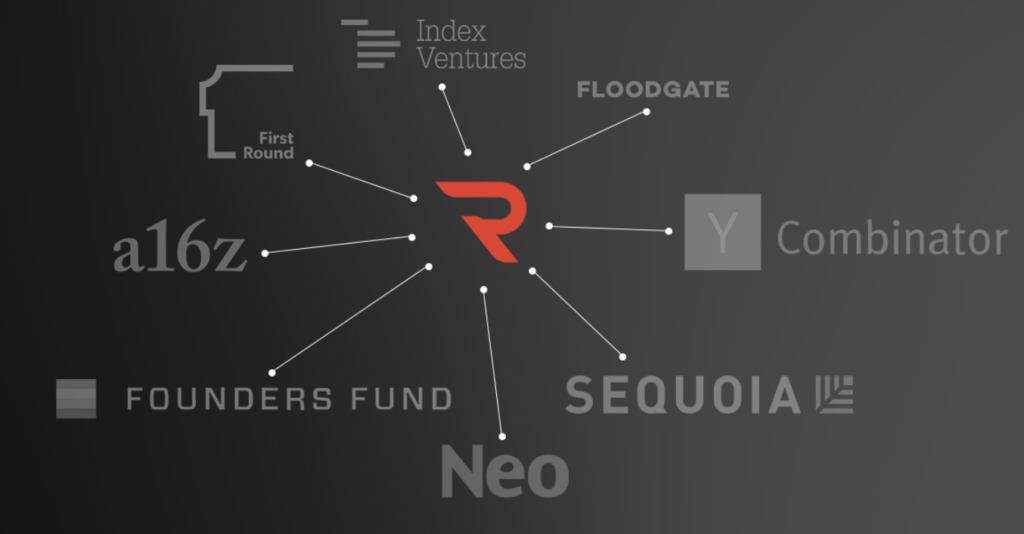Want to double your sales conversion rates? Then you have to start at the beginning: outreach prospecting.
Hitting those high conversion rates starts with nailing your sales prospecting strategy.
But let’s face it: not all prospecting is created equal. In today’s crowded marketplace, where every sales rep is vying for attention, traditional techniques often fall short.
That’s where outreach prospecting comes into play, standing out as the game-changer for many successful sales teams. This strategy isn’t just about reaching out; it’s about reaching out smartly, leveraging personalization, and employing the right tools to connect with potential customers in a way that resonates.
Now, think about this: How much more could you achieve if your prospecting efforts didn’t just hit the mark but made a lasting impression?
Imagine transforming your initial outreach into a powerful tool that captures attention AND nurtures those prospects through to a sale.
With outreach prospecting, you’re not just casting a wide net and hoping for the best. You’re strategically targeting, engaging, and rapidly moving prospects through your sales pipeline.
In this blog, we’re diving deep into how you can harness the power of outreach prospecting to meet and exceed your sales goals.
Ready to revolutionize your approach and see those conversion rates soar? Let’s get into it.

Table of Contents
- Outreach Prospecting: A Comprehensive Guide to Sales Prospecting and Sales Outreach Success
The Importance of Sales Prospecting
Sales prospecting isn’t just an item on your founder-led sales to-do list; it’s the bedrock of your entire B2B sales development strategy. Why? Because it’s all about building that essential pipeline—a pipeline that’s not merely a collection of contacts but a curated list of potential customers who are a perfect fit for your product or service.
Why Rampd Focuses on Effective Prospecting
At Rampd, we view sales prospecting as the pivotal first engagement with potential buyers. It’s where you start to:
- Identify the right prospects through strategic research.
- Prioritize leads based on their potential to convert.
- Use sales tools effectively to enhance your prospecting efforts.
Securing High-Quality Leads
The gold in your sales pipeline comes from high-quality leads. Achieving this requires:
- Strategic Effort: Efficient research and qualification of leads to focus your energy on the most promising prospects.
- Key Decision-Makers: Identifying who has the buying power within organizations to streamline your sales process.
Overcoming Objections Proactively
A standout aspect of successful prospecting involves dealing with potential objections head-on. This means:
- Tailoring Your Approach: Customizing your conversations to address and preempt objections.
- Building Trust: Establishing a relationship based on transparency and understanding from the outset.
Building Long-Term Partnerships Through Prospecting
The ultimate goal of sales prospecting isn’t just to make a sale; it’s to lay the groundwork for lasting relationships. Effective prospecting:
- Begins the journey with your prospects on the right foot.
- Leads to meaningful partnerships where both parties grow together.
By emphasizing these elements in your sales prospecting efforts, you’re not just filling your pipeline but building the foundation for sustainable sales success. Remember, it’s about connecting genuinely, solving real problems, and nurturing relationships that go beyond the initial sale.
Feeling stuck in your sales process? It’s time for a change. Click here to book a strategy session with the Rampd team. Let’s pinpoint where you can optimize for better leads, more effective prospecting, and a sales pipeline that delivers.

Outreach Prospecting: A Comprehensive Guide to Sales Prospecting and Sales Outreach Success
Let’s dive into outreach prospecting so you and your founder-led sales team can close more deals, get on your way to 1 million in revenue (this is Rampd’s benchmark for our clients), and establish PMF (product market fit).

Prospects Vs. Leads Vs. Sales Opportunity
Navigating the sales process involves distinguishing between three key elements: prospects, leads, and sales opportunities. Each plays a distinct role in your journey toward closing a deal. Here’s how they break down:
Leads: The Starting Point
- Initial Interest: Leads are at the top of the sales funnel, showing preliminary interest in your business.
- Not Yet Qualified: They’ve taken some action that indicates interest but haven’t been evaluated for fit or readiness to buy.
Lead generation is incredibly important in outreach prospecting. In the next section, I’ll break down Rampd’s lead generation process.
Prospects: A Step Closer
- Qualified: Unlike leads, prospects have been assessed and deemed a good fit for what you’re offering.
- Showing Purchase Potential: They demonstrate clear interest and are considered potential buyers, having moved further down the sales funnel.
Sales Opportunities: On the Verge of Closing
- Highly Likely to Convert: These are prospects at an advanced stage, showing strong potential to become paying customers.
- Identified Pain Point: They have a clearly defined need your product or service can fulfill.
Guiding Leads to Become Prospects and Opportunities
Conversion from a lead to a prospect and then to a sales opportunity isn’t accidental. It requires strategic navigation through the sales qualification process. At Rampd, we emphasize the importance of this journey, focusing on:
- Organization-Level Fit: Ensuring the lead aligns with your ideal customer profile.
- Opportunity-Level Assessment: Evaluating the potential for a deal based on the lead’s needs and your ability to meet them.
- Stakeholder-Level Insight: Identifying and connecting with the key decision-makers within the lead’s organization.
Qualification: The Key to Unlocking Sales Success
To convert a lead into a prospect, guiding them through the sales qualification process is important. This process involves evaluating the organization-level, opportunity-level, and stakeholder-level fit to ensure alignment with your buyer personas and identify key decision-makers within the prospect’s company.
Qualification skills play a significant role in uncovering the prospect’s specific needs and pain points.
Why Sales Opportunities Matter
Focusing on leads and prospects that exhibit the characteristics of a sales opportunity can dramatically improve your conversion rates and revenue growth. Characteristics to look for include:
- Expressed Interest: They’ve explicitly shown they’re considering your solution.
- Acknowledged Pain Points: They recognize issues or challenges that your product can address.
- Intent to Purchase: There’s a genuine willingness or plan to buy in the near future.
By emphasizing these stages and effectively guiding leads through the qualification process, you set the stage for more successful conversions. Remember, every interaction is a step toward converting a lead into a prospect and a prospect into a sales opportunity. Keep your focus on moving them through the funnel with insight, empathy, and strategic engagement.

Rampd’s Lead Generation Process Broken Down
Leads are where your sales journey begins, the crucial first touchpoint in the expansive world of sales and marketing. Here’s how we at Rampd approach this pivotal stage:
Lead Generation – The Rampd Way
Lead generation is the lifeline of outreach prospecting and your sales process. Here’s why:
- Precedence of Selling: The idea is to sell before you build. You need a pool of prospects to pitch to, making lead generation your top priority.
- Building a Consistent Top of Funnel (TOFU): Understanding and constructing a robust top of the sales funnel is essential for a steady flow of leads.
Rampd’s Dual-Channel Strategy
At Rampd, we zero in on two potent channels for lead generation: cold email and LinkedIn (LI). Here’s how we maximize their potential:
Cold Email:
- Separate Domains: Purchase and warm up separate domains for your email campaigns, typically a three-week process.
- Tool of Choice: We use Instantly.ai to streamline our outbound flow, ensuring efficiency and effectiveness.
- Email Campaigns: Craft a series of 4 emails spread over 12 days. Experiment with subject lines, keeping them concise (1-3 words). A well-chosen subject line can significantly boost open rates. For instance, our “demo day” campaign achieved a 100% open rate.
- Invoke Curiosity or Concern: Use words that spark action or concern, such as churn, burn rate, attrition, burnout, inefficient, etc.
LinkedIn:
- List Building: Utilize Sales Navigator to compile targeted lists of potential leads.
- Automation: Implement automation tools like Expandi.io to efficiently manage and execute your LinkedIn outreach.
Understanding Leads
- Initial Interest: Standing at the entrance of the sales funnel, leads display an early interest in what you’re offering.
- Qualification Pending: While they’ve shown some level of engagement, leads require further evaluation to determine their fit and readiness to proceed in the buying process.
By prioritizing lead generation and employing strategic approaches to cold email and LinkedIn outreach, you set a strong foundation for your sales funnel. Remember, every lead is a potential opportunity waiting to be nurtured and converted.

Effective Prospecting Techniques
To maximize your sales prospecting success, you’ll want to leverage a combination of personalized communication strategies and targeted outreach techniques. Try some or all of the following:
Targeted Guarantee Calls
- Focus on Interested Prospects: Zero in on those who’ve shown a spark of interest in what you offer. Their prior engagement means they’re warmer leads.
- Research is Key: Dive deep into understanding their needs, preferences, and challenges. This knowledge allows you to make your calls more relevant and impactful.
- Why Guarantee Calls Work: They’re not shots in the dark. By calling leads who are already somewhat interested, you’re more likely to see conversions, saving time and resources in the process.
Crafting Captivating Emails
- Personalization is Paramount: Generic doesn’t cut it. Tailor your emails to speak directly to the recipient’s specific needs and how your solution fits.
- Offer Value: It’s not just about selling. Provide insights, tips, or advice that prospects find useful, building trust and positioning you as a helpful resource.
- Result: Well-crafted, relevant emails can dramatically increase your chances of moving prospects further along the sales funnel.
Leveraging LinkedIn for Prospecting
- A Treasure Trove of Prospects: With a vast community of professionals, LinkedIn is a goldmine for finding and connecting with potential buyers.
- Be Active, Be Engaging: Share updates, contribute to conversations, and engage with your prospects’ content to stay top of mind.
- Automation Tools: Tools like Expandi.io can streamline your outreach, making your LinkedIn prospecting more efficient and far-reaching.
Adapting to Customer Behavior
- Stay on Your Toes: The sales landscape is ever-evolving, with customer preferences and behaviors shifting. Being adaptable in your approach is crucial.
- Diverse Channels: Mix up your outreach methods. Email, social media, phone calls—use the channels your prospects prefer.
- The Psychology of Selling: Understand the “why” behind customer actions and tailor your communication to address these motivations effectively.
Tailor Techniques to Your Business
The key to successful outreach prospecting? Finding what fits your unique context. It might be one of these strategies or a combination thereof. Experiment, measure the results, and refine your approach to discover the formula that closes the most deals for you. Remember, the goal is not just to reach out but to connect meaningfully, paving the way for genuine, lasting business relationships.
Ready to transform your sales approach but not sure where to start? Let us guide you. Schedule a call with Darren and the Rampd team to explore tailored strategies that fit your business needs. Click here and take the first step towards sales success.

Creating Impactful Sales Prospecting Emails
To turn your sales prospecting emails from mere messages into conversion engines, you need more than just good content; you need a strategy that combines personal touches, compelling elements, and a clear path forward. Here’s a blueprint to elevate your email game:
Personalize to Stand Out
- Beyond the Basics: Start with their name, company, and any specific detail that shows you’ve done your homework. Personalized emails go beyond the surface, making your message feel like a one-on-one conversation.
- Why It Works: Tailoring your email increases the chances it’ll resonate, making recipients more likely to engage and respond.
Subject Lines That Capture Attention
- Be Concise and Relevant: Your subject line is your first impression. Make it count with something short, sweet, and intriguing enough to make them want to know more.
- The Goal: You want that email opened. A compelling subject line significantly boosts your open rates, paving the way for your message to be heard.
A Clear Call to Action (CTA)
- Direct and Specific: Tell them exactly what you want them to do next—schedule a call, download a guide, and reply with their thoughts. The clarity in your CTA removes the guesswork and nudges the prospect toward action.
- The Impact: A well-crafted CTA isn’t just a step; it’s the leap toward engagement, guiding your prospect to the next phase of the sales journey.
The Art of the Follow-Up
- Structured and Timely: Plan your follow-ups with the same care as your initial outreach. Timing is everything – not too soon, not too late, just right to keep the conversation alive.
- Customization is Key: Tailor your follow-ups based on their responses or lack thereof. Each follow-up should offer additional value, reinforcing the reason to engage further.
Putting It All Together
Creating effective sales prospecting emails isn’t just about following a template; it’s about crafting a personalized, compelling, and actionable pathway that leads your prospects closer to a yes. By integrating these elements into your email strategy, you’re not just reaching out; you’re inviting your prospects on a journey that’s hard to ignore. Remember, each email is an opportunity to connect, solve a problem, and build a relationship that could turn into a successful sale.

Boosting Your Sales Pipeline Performance
To really drive your sales forward, enhancing your pipeline’s performance is non-negotiable. This isn’t about a one-and-done improvement but continuous optimization at every stage—lead generation, nurturing, and pipeline management—to boost conversions and revenue growth. Here’s how you can achieve it:
Foundation: Lead Generation
- Start Strong: Capture potential buyers’ attention from the get-go. Your pipeline’s health depends on a steady stream of leads that are ready to be nurtured.
- Engage Early: Initiate the sales process by engaging these leads promptly. The goal is to move them from initial interest to genuine consideration.
Nurturing: The Middle Ground
- From MQL to SQL: Guide your leads through the pipeline by engaging them with strategic communication. Tailor your messages to their needs and stage in the buying process.
- Personalized Engagement: Use insights from previous interactions to inform your approach, making each touchpoint more relevant and impactful.
Pipeline Management: The Strategic Overview
Effective management of your sales pipeline is crucial for clarity, efficiency, and improvement. Here are key strategies:
- Refine Your Customer Profile: Knowing exactly who your ideal customer is makes your efforts more targeted and effective.
- Consistent Follow-Up: Stay in touch with leads at every stage. Regular, meaningful contact keeps potential buyers engaged and moving forward.
- Leverage Technology: Sales intelligence software can provide valuable insights, automate tasks, and help you track progress through the pipeline.
- Keep an Eye on Metrics: Understanding your pipeline’s dynamics through metrics allows you to identify bottlenecks and opportunities for improvement.
- Efficient Time Management: Prioritize activities that move leads closer to a sale. Time is a precious resource in sales; use it where it counts the most.
Overcoming Common Challenges
To smooth out the sales process, be proactive in addressing these common hurdles:
- Clarify Client Definitions: Ensure everyone in your team understands what makes a lead MQL or SQL to avoid confusion and inefficiency.
- Identify Decision-Makers: Early identification of who calls the shots can save time and direct your efforts more accurately.
- Address Roadblocks Head-On: Whether it’s budget constraints, lack of understanding, or any other objection, tackle these issues promptly to keep the deal moving.
Improving your sales pipeline’s performance is an ongoing process that demands attention to detail, strategic planning, and a proactive approach. By focusing on these areas, you’re not just enhancing your pipeline; you’re setting the stage for sustained sales success and growth.
Conclusion
Now that you have the knowledge and tools to excel in sales prospecting, it’s time to put your newfound skills into action. Remember, consistency is key in the sales world, and perseverance is your greatest ally.
Remember that boosting your sales involves constantly refining your approach to prospecting, nurturing leads, and managing your sales pipeline with precision. It’s about making every interaction count, leveraging the right tools, and adapting to lead behaviors and market shifts. These aren’t just tasks but opportunities to connect, solve problems, and build lasting relationships that drive sales and growth.
Let’s chat if you’re ready to take your sales strategy to the next level. Book a call today with the Rampd team and me. We’re here to help you streamline your sales process, enhance your pipeline performance, and turn those prospects into profits. Click here to schedule your session. Let’s ramp up your sales together.

